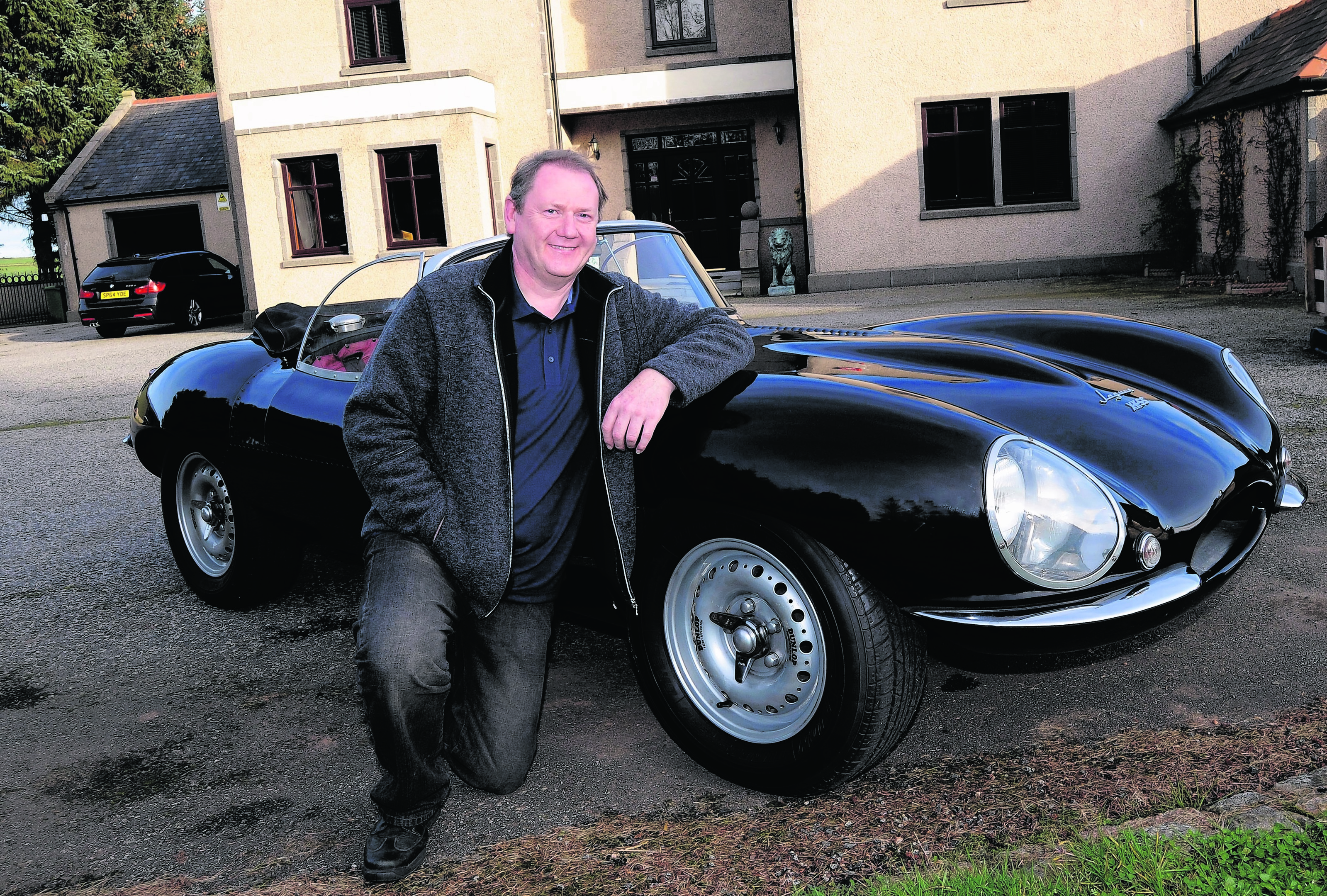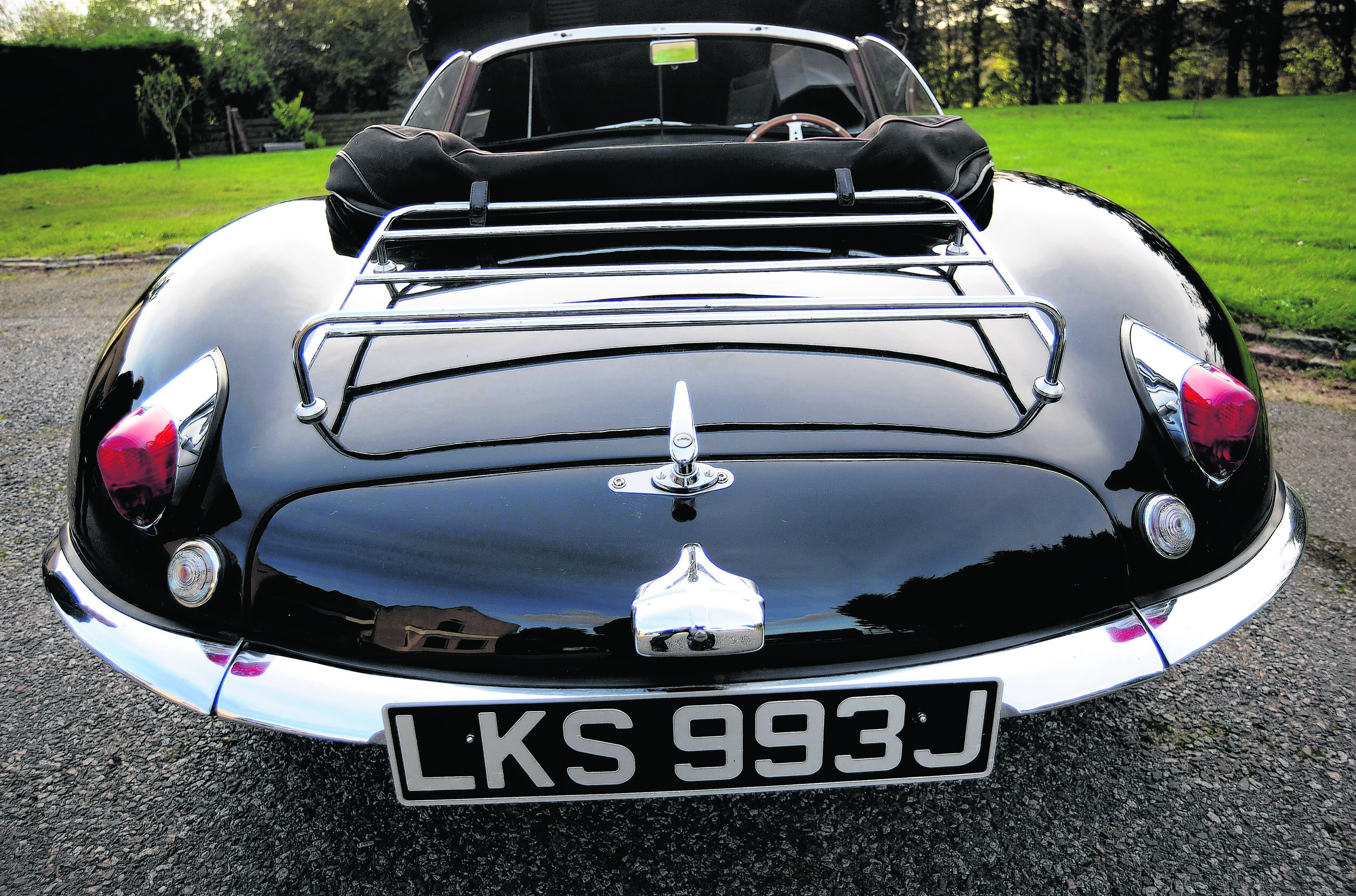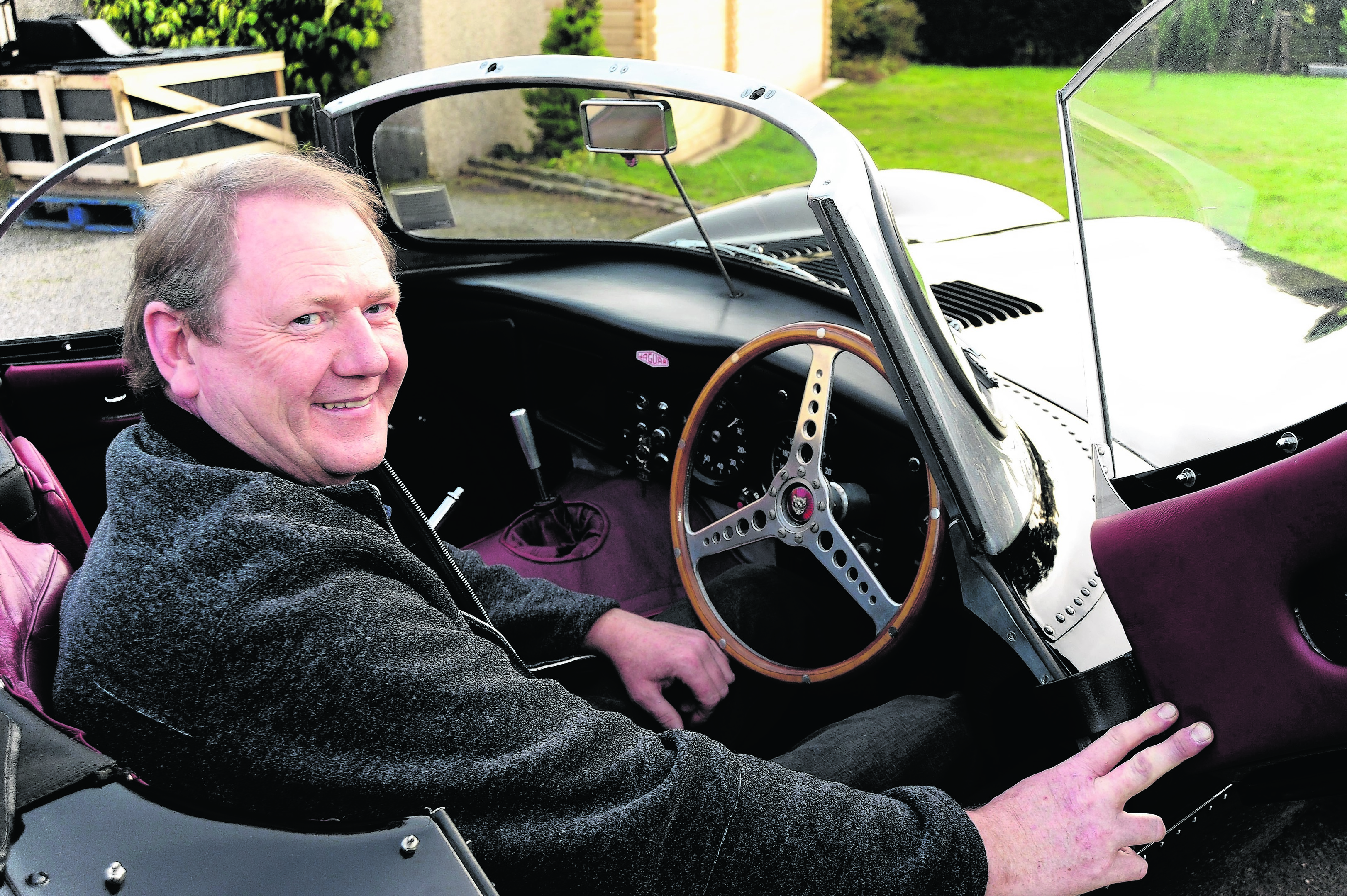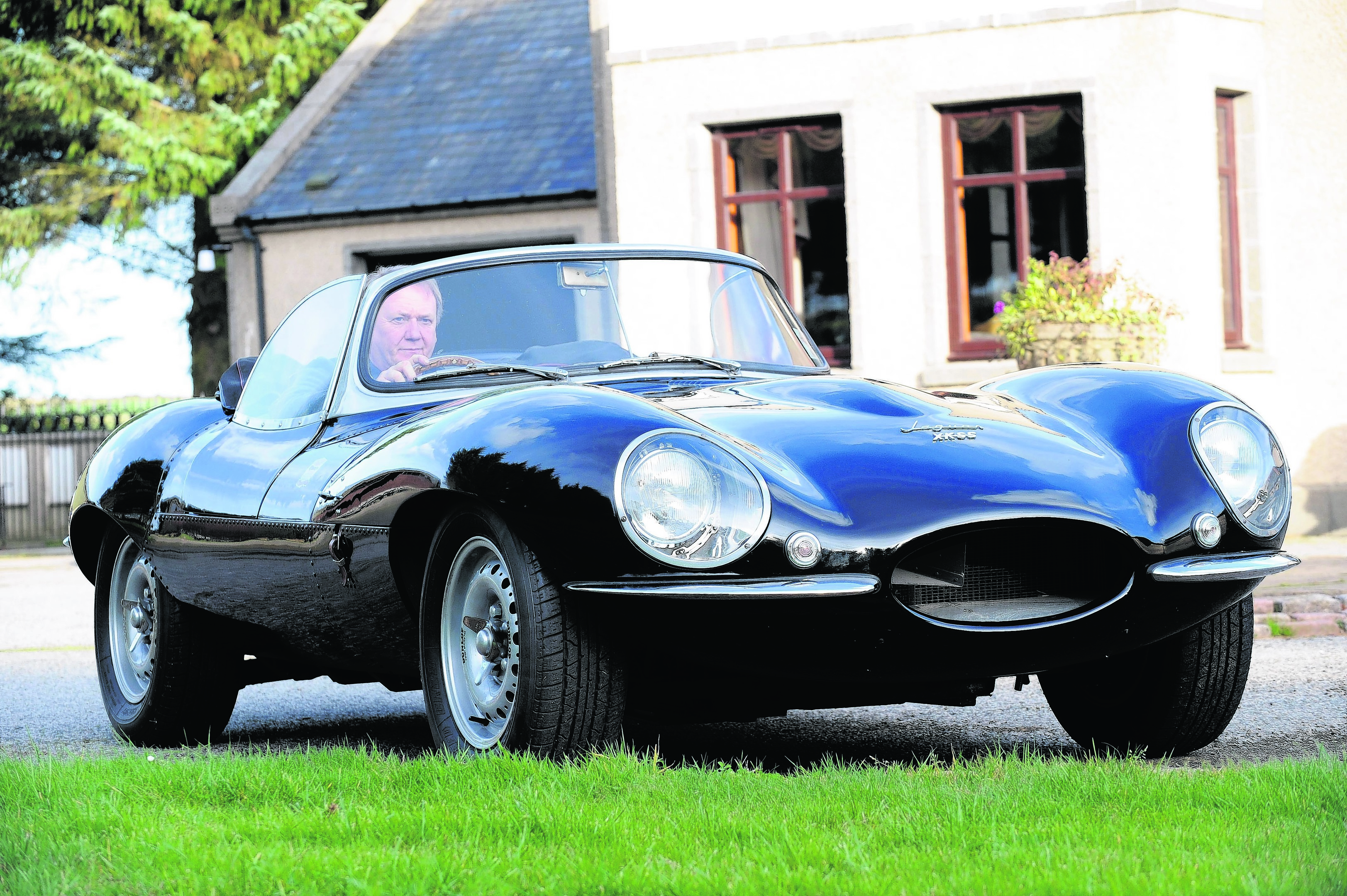Most people have heard of the Jaguar E-type but many do not know of the marque’s heritage that led to that iconic vehicle.
Ian Mcfarlane is not one of these people. He is well aware of the path that led to the E-type – and is an owner of a replica of one of the rarest big cats ever made.
The 54-year-old, who lives in New Pitsligo and works as a process scientist with Scottish Water, explained that in the 1950s Jaguar had significant success at Le Mans and elsewhere with their racing D-type.
The company decided to convert some 50 of the D-type racers to road racing car spec and call it the Jaguar XK SuperSport – or XKSS.
“They did this very simply and cheaply by removing the rear fin behind the driver’s seat, adding a full wrap round windscreen, removing the centre brace and fitting a passenger seat and cut down chrome quarter bumpers,” said Ian.
“That was pretty much it with the running gear, engine and so on being left largely unchanged which left you with a road going, Le Mans racer for the road.
“However, after Jaguar had converted only 16 of the D-types, there was a big fire at the Browns Lane factory which destroyed a lot of the remaining stock of vehicles and tooling and the project was abandoned.”
He said 15 of the 16 vehicles were sold in America and have since became extremely sought after with an original example fetching millions of dollars if and when they come to market.
The most famous owner of an XKSS was the actor Steve McQueen who was a buyer of one of the first available in the States and famously bought it back after he sold it for a few years as he missed it so much.
Ian can understand what McQueen’s desire was in trying to get his XKSS back having bought a replica car himself in 2006.
The car is an exact replica of a 1957 Jaguar XKSS produced by RAM engineering. It was built by a chap called Graeme Wilsher in the early 1990s who was an aircraft technician.
Ian said: “He was an expert craftsman in working with aluminium and it took him four years to meticulously build the car with great attention to the smallest details.
“The engine is a 4.2-litre straight six Jaguar twin cam engine which was rebuilt to racing spec by Forward engineering and is coupled to a five-speed Toyota Supra gearbox. The fuel system is via triple weber racing carburettors.
“I had wanted an XKSS replica for many years.
In my late twenties I went as far as purchasing a donor vehicle (a 4.2-litre Jaguar XJ6) and totally stripped it down.
“Unfortunately, I did not have enough space or time to complete the project and had to abandon it.
“Moving on 20 years, by chance, I saw an advert in classic car magazine from a dealer who had acquired Graeme’s vehicle and I decided that I had to have it as I knew the build quality of it was way above the usual standard.”
In fact all Ian had to do to improve on the work of the previous owner was tidy up the paintwork as it was looking a little tired.
Ian had it professionally repainted in black which he thought was a colour that suited the car.
As for the car itself, Ian said he loved its “curves” adding it is much rarer to see one of these than a D-type replica which RAM engineering also produce. This was not his first big cat though having previously owned an E-type.
“The XKSS is much quicker – it feels like a race car when you drive it, it’s lots of fun”, he said.
“It is surprisingly small – about the length of a modern VW Golf but that’s where the similarity ends. It is lightweight due to its construction method and very fast. It feels very much of its period.
“Since it was built it has only covered around 12,000 miles and most of that was by the previous owner.
“I haven’t used it often as I would have liked but have taken it out in the summer months and to a few shows where it always draws a bit of attention and I have been lucky enough to win a couple of awards with it.”
Ian said at the moment the XKSS is going nowhere – and like Steve McQueen would probably miss it if it was gone.
He added: “I never tire of looking at the XKSS – to me it is like owning a work of art.”
My first car…
Sunbeam Alpine MkV sports car
My dream car…
I’ve already got it



